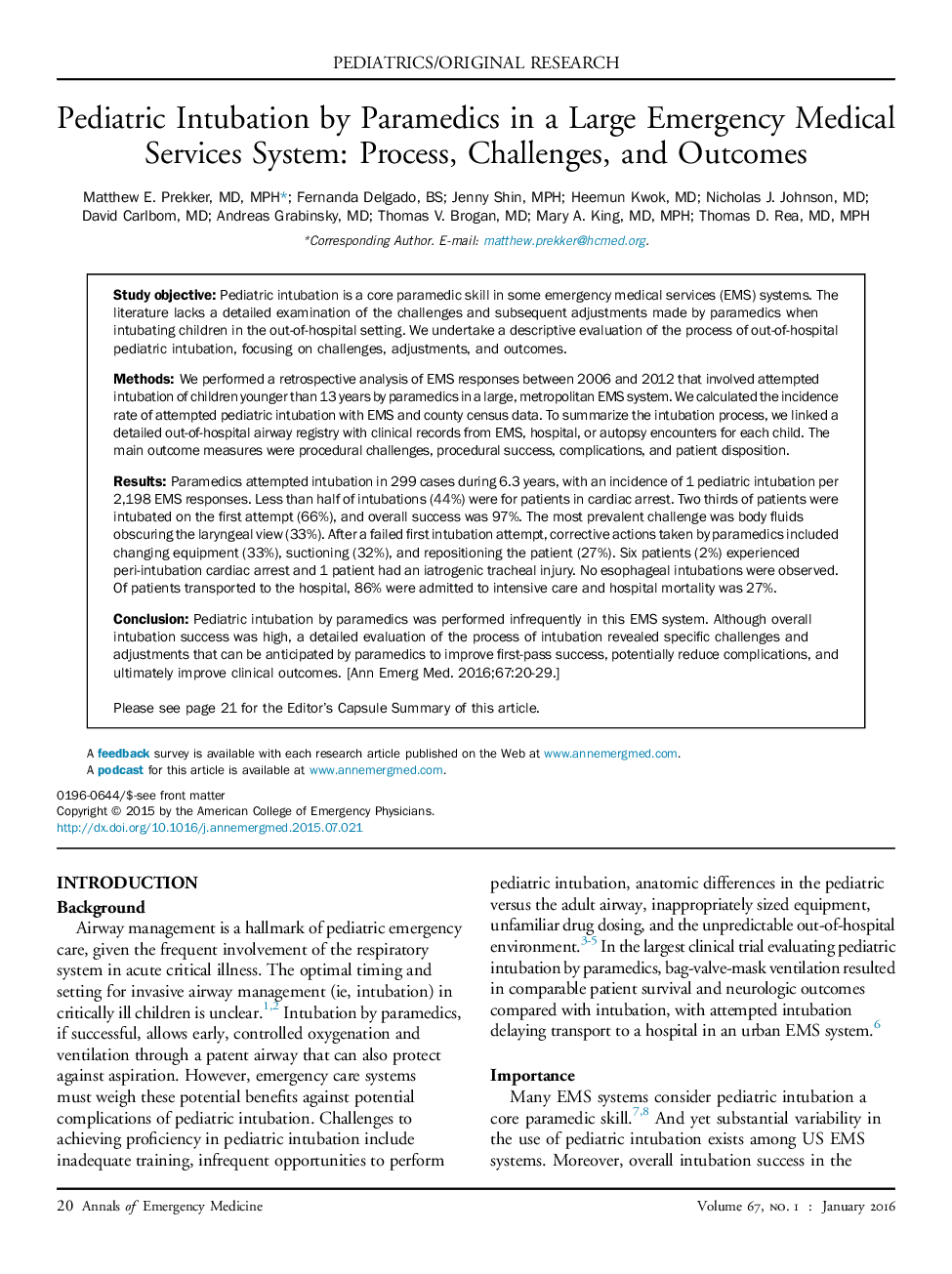| Article ID | Journal | Published Year | Pages | File Type |
|---|---|---|---|---|
| 6080880 | Annals of Emergency Medicine | 2016 | 14 Pages |
Study objectivePediatric intubation is a core paramedic skill in some emergency medical services (EMS) systems. The literature lacks a detailed examination of the challenges and subsequent adjustments made by paramedics when intubating children in the out-of-hospital setting. We undertake a descriptive evaluation of the process of out-of-hospital pediatric intubation, focusing on challenges, adjustments, and outcomes.MethodsWe performed a retrospective analysis of EMS responses between 2006 and 2012 that involved attempted intubation of children younger than 13 years by paramedics in a large, metropolitan EMS system. We calculated the incidence rate of attempted pediatric intubation with EMS and county census data. To summarize the intubation process, we linked a detailed out-of-hospital airway registry with clinical records from EMS, hospital, or autopsy encounters for each child. The main outcome measures were procedural challenges, procedural success, complications, and patient disposition.ResultsParamedics attempted intubation in 299 cases during 6.3 years, with an incidence of 1 pediatric intubation per 2,198 EMS responses. Less than half of intubations (44%) were for patients in cardiac arrest. Two thirds of patients were intubated on the first attempt (66%), and overall success was 97%. The most prevalent challenge was body fluids obscuring the laryngeal view (33%). After a failed first intubation attempt, corrective actions taken by paramedics included changing equipment (33%), suctioning (32%), and repositioning the patient (27%). Six patients (2%) experienced peri-intubation cardiac arrest and 1 patient had an iatrogenic tracheal injury. No esophageal intubations were observed. Of patients transported to the hospital, 86% were admitted to intensive care and hospital mortality was 27%.ConclusionPediatric intubation by paramedics was performed infrequently in this EMS system. Although overall intubation success was high, a detailed evaluation of the process of intubation revealed specific challenges and adjustments that can be anticipated by paramedics to improve first-pass success, potentially reduce complications, and ultimately improve clinical outcomes.
